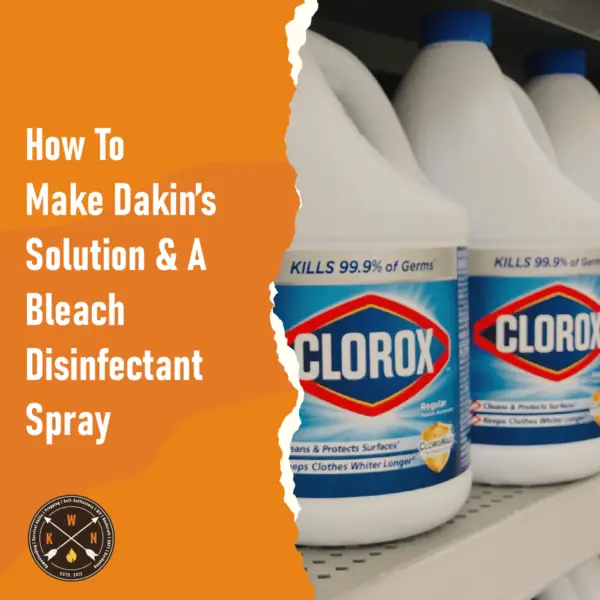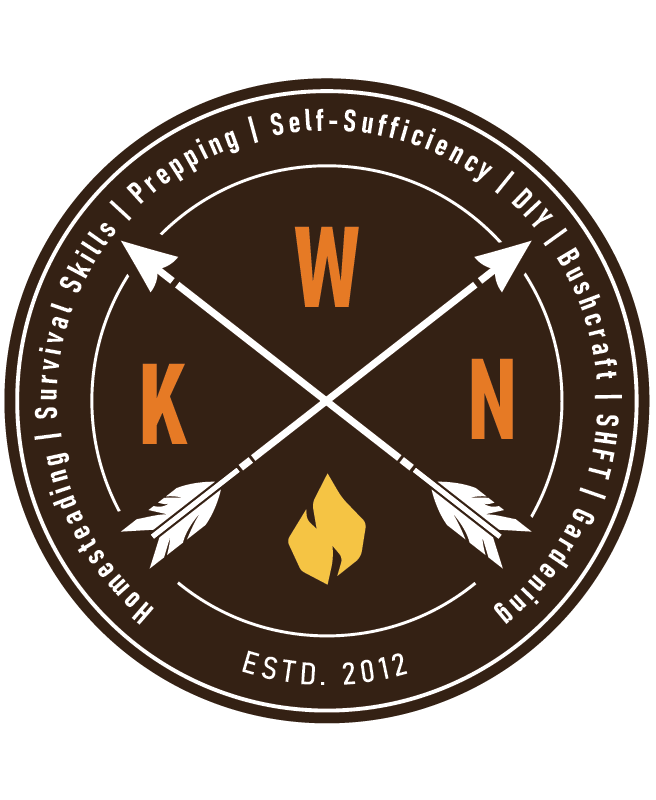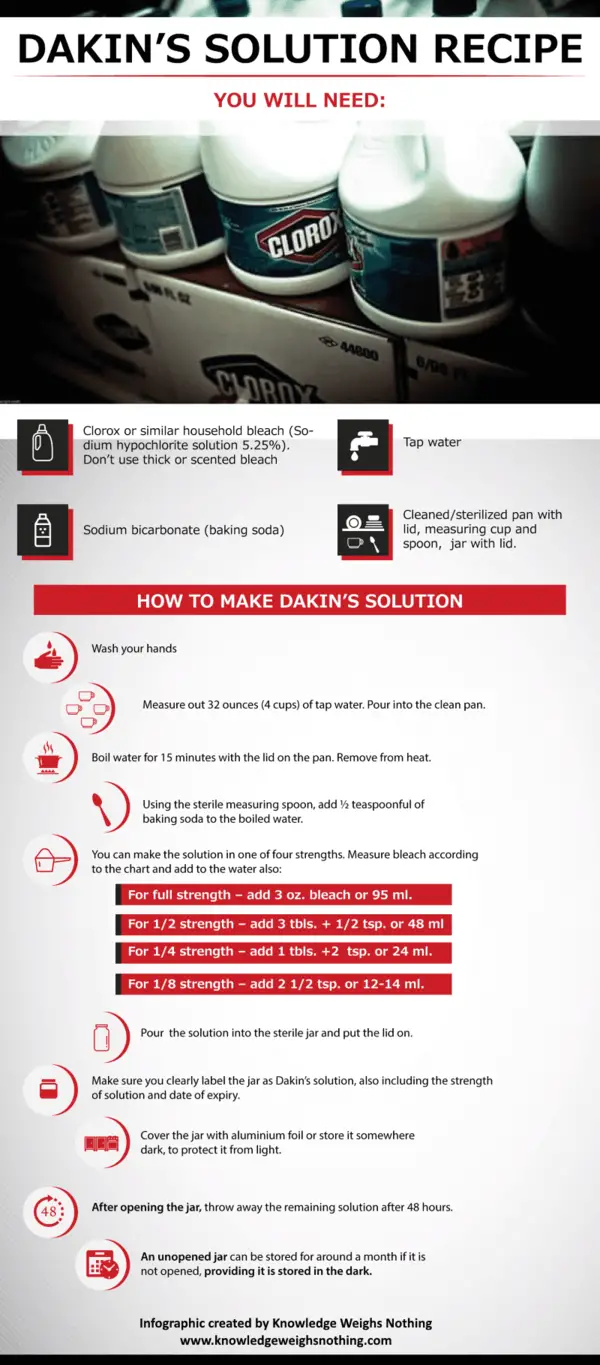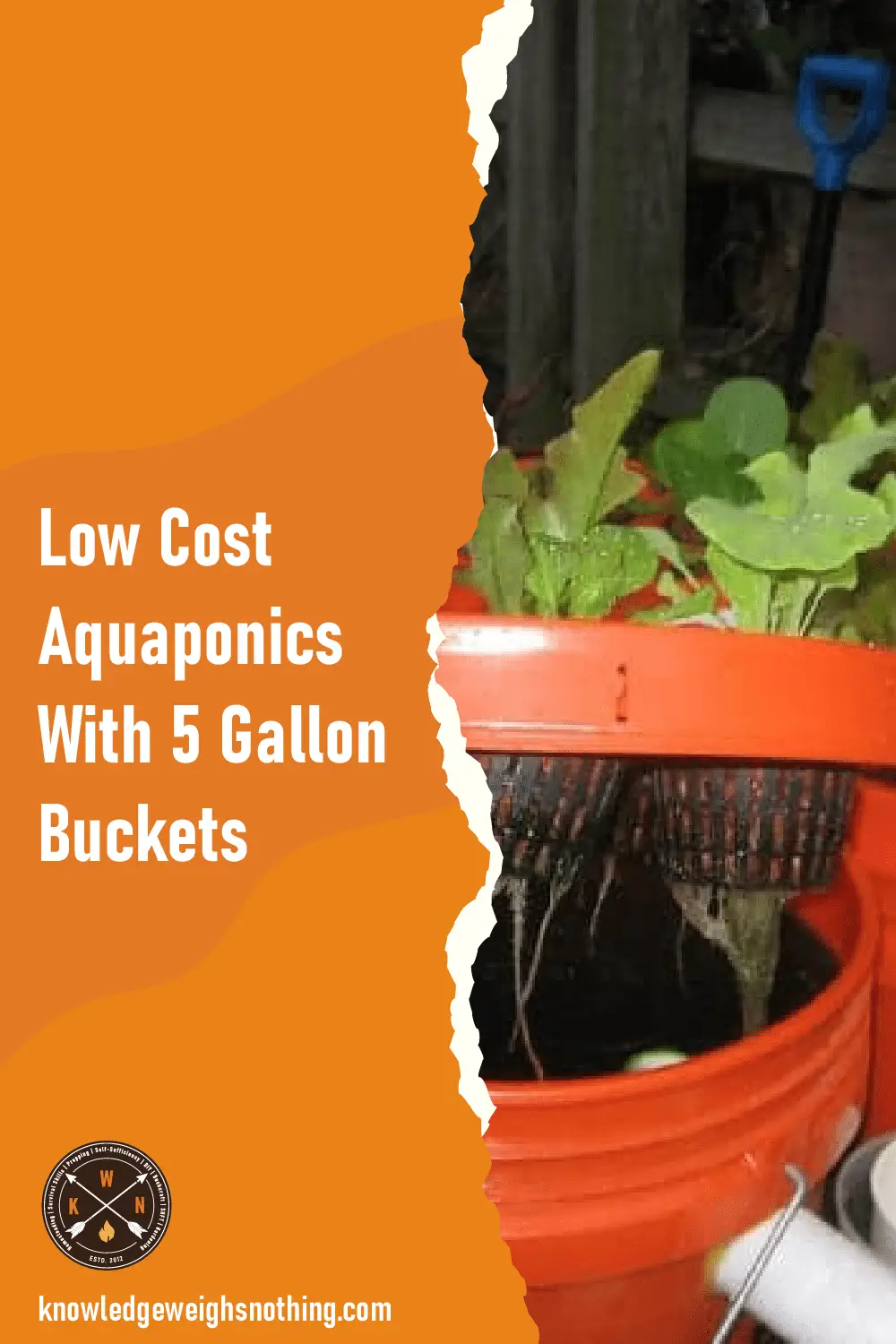
If you are interested in finding out how to make Dakin’s Solution, this is the post for you! I have provided details on how to make Dakin’s Solution, together with the Dakin’s Solution recipe. I have also added a bonus recipe for making a disinfectant surface spray from household bleach.
Used mainly to clean and disinfect toilets and sinks, basic household chlorine bleach is very cheap, it’s easy to obtain and it kills almost all known germs and most viruses. Almost everyone has a bottle of bleach in a cupboard at home, but not many people know that household bleach can be used to make a powerful disinfectant wound wash known as Dakin’s Solution or diluted to make a low-cost homemade bleach disinfectant surface sprays.
Below you will find the widely used ratios and ingredients to make Dakin’s Solution and the homemade bleach surface spray.
The homemade antiseptic wound wash known as Dakin’s solution (also known as Dakin’s fluid & Carrel–Dakin fluid) was developed by an English chemist, Henry Drysdale Dakin and French surgeon, Alexis Carrel, it was first used in the First World War to treat soldier wounds and fight infection. The Dakin’s solution recipe is made up of Clorox or similar (basic/non-scented) chlorine bleach, baking soda and water, that’s it…
Table of Contents
ToggleHow To Make Dakin’s Solution Antiseptic Wound Wash
Dakin’s Solution Recipe
You will need:
- Clorox or similar household bleach (Sodium hypochlorite solution 5.25%). Don’t use thick or scented bleach
- Sodium bicarbonate (baking soda)
- Tap water
- Cleaned/sterilized pan with lid, measuring cup and spoon, jar with a lid.
How To Make Dakin’s Solution
- Wash your hands
- Measure out 32 ounces (4 cups) of tap water. Pour into the clean pan.
- Boil water for 15 minutes with the lid on the pan. Remove from heat.
- Using the sterile measuring spoon, add ½ teaspoonful of baking soda to the boiled water.
- You can make the solution in one of four strengths. Measure bleach according to the chart and add to the water also:
-
- For full strength – add 3 oz. bleach or 95 ml.
- For 1/2 strength – add 3 tbls. + 1/2 tsp. or 48 ml
- For 1/4 strength – add 1 tbls. +2 tsp. or 24 ml.
- For 1/8 strength – add 2 1/2 tsp. or 12-14 ml.
- Pour the solution into the sterile jar and put the lid on.
- Make sure you clearly label the jar as Dakin’s solution, also including the strength of the solution and date of expiry
- Cover the jar with aluminium foil or store it somewhere dark, to protect it from light.
After opening the jar, throw away the remaining solution after 48 hours. An unopened jar can be stored for around a month if it is not opened, providing it is stored in the dark.
How To Make A Homemade Disinfectant Bleach Spray Solution
Safety
- Bleach emits toxic fumes. Mix the solution outdoors or in a well-ventilated space.
- Never mix bleach with ammonia, alcohol, vinegar or other acids as doing this can create toxic gases that can be fatal.
- Wear rubber gloves and avoid getting bleach on your skin or clothes.
Homemade Bleach Disinfectant Spray Recipe
- Clorox or similar household bleach (Sodium hypochlorite solution 5.25%). Don’t use thick or scented bleach.
- Tap water
- A mixing/measuring jug
- An old thoroughly rinsed out plastic spray bottle
How To Make Bleach Disinfectant Spray
The bleach to water ratio is 1:10. That’s 1 part bleach for 10 parts water.
Coronavirus: The CDC state that 5 tablespoons (1/3rd cup) bleach per gallon of water or 4 teaspoons bleach per quart of water is effective against coronavirus.
- Measure out the amount of water required.
- Measure out the amount of bleach needed (1:10 ratio based on the amount of water).
- Add the water and bleach to the mixing jug and carefully mix.
- Carefully pour the mixed solution into a plastic spray bottle and use it to disinfect surfaces as required. Be sure to label the bottle as bleach disinfectant!
There is some debate as to how long this disinfectant solution remains effective as it loses disinfectant power quickly when exposed to heat and sunlight. With this in mind, it seems sensible to make small batches daily and discard any leftover.
We have also done a how to make germ and virus-killing homemade disinfectant wipes post. Additionally, if you are looking for hand wash or hand sanitiser, but they also sold out in the shops, check out our simple DIY hand sanitiser post and our dish soap DIY foaming hand wash post.
(Clorox image by JeepersMedia)





